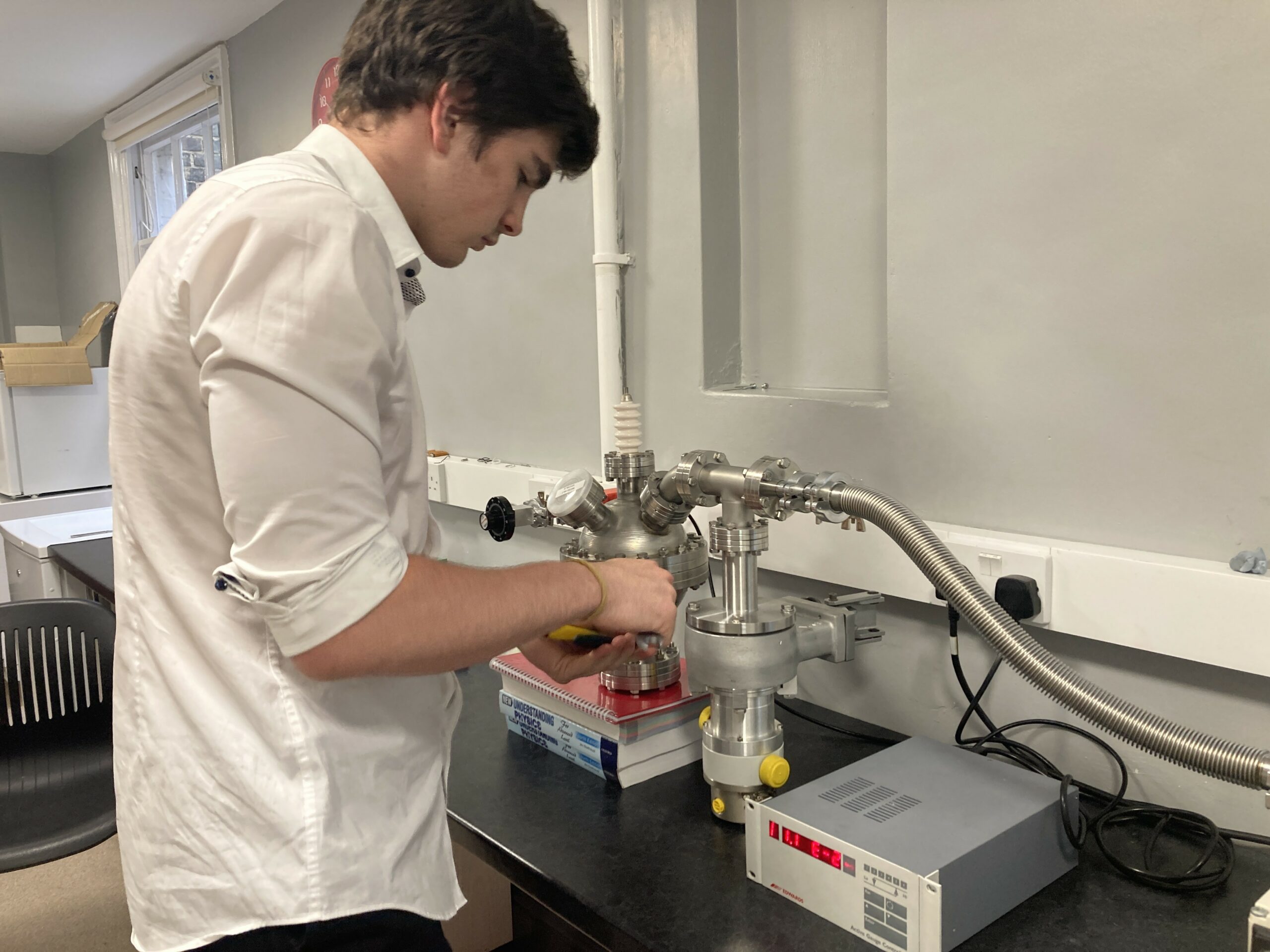
Massimiliano Brolli : 26 August 2024 08:30
Today we bring you an interview with Cesare Mencarini, a young man who, at just 17 years old, with uncommon determination and intelligence, built a nuclear fusion reactor as a school project.
An 18-month-long feat, considered extraordinary, which saw the light of day in the context of his baccalaureate examination at a British college, arousing admiration not only for the complexity of the project, but also for the message it conveys to his peers: technology and science are accessible to anyone willing to devote time and passion.
This achievement is an excellent example of what can be called ‘hacking’: the art of overcoming obstacles, innovating and creating solutions where there were none before. Cesare is a true hacker in the noblest sense of the term, having applied his skills to solve a complex and fascinating challenge.
Although his project did not achieve nuclear fusion, it allowed the reactor to generate plasma for several months, starting in June. The creation of plasma is a key step in the nuclear fusion process.
We at Red Hot Cyber interviewed Cesare to show young people that, in addition to video games and social networks, the web offers endless opportunities to explore and delve into exciting topics, thus setting them on a path towards science and knowledge.
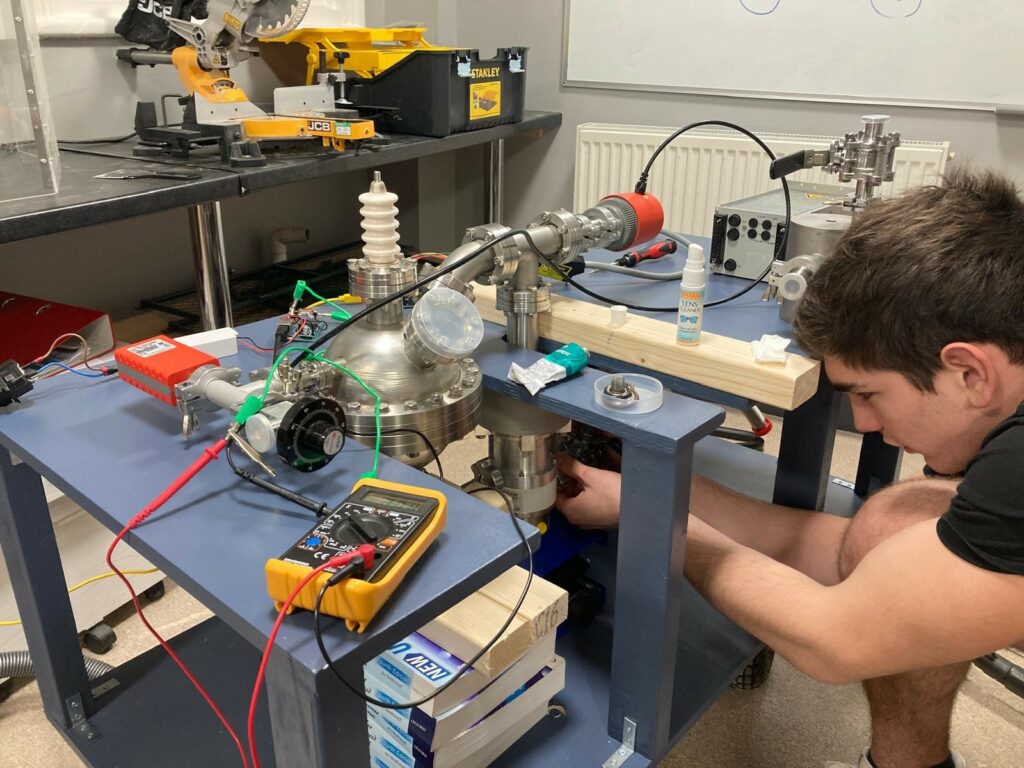
RHC: Hello Cesare, first of all, thank you for this interview. Can you tell us how the idea of building a nuclear fusion reactor for your school project came about?
Cesare Mencarini: The first time I came across the concept of a fusor was through a YouTube video. Since my primary interest lies in engineering, my feed is often filled with science-related content. Intrigued by the idea, I began researching fusion technology more broadly. The project captivated me, so I proposed it to my school. However, they initially rejected it due to safety concerns.
While exploring other project ideas, my physics teacher reached out to a nuclear research group. This connection led to a PhD student, who had experience with similar projects, offering to mentor and guide me through the initial stages. With this additional support, I conducted a detailed safety assessment and presented numerous project pitches to the school administrators. Eventually, my project was approved, though the funding granted was only 25% of the original amount we had requested, which we were still grateful for.
RHC: When did your passion for engineering and physics begin? Is there a specific event that sparked this interest?
Cesare Mencarini: My passion for engineering and innovation has been evolving over many years. It began when I was nine years old and my dad brought home an Arduino board, which opened up a world of possibilities with its ease of coding and hardware integration. One of my early projects was a small 3D-printed robot named “Wolly.” This robot could rotate its head, make noises, and use LEDs, offering me hands-on experience with electronic circuits and C++ programming. This project sparked a deep interest in me that has only grown since.
Over time, I continued to refine my skills with Arduino boards and expanded my knowledge into various areas such as 3D modelling, printing, graphic design, and Python programming. There wasn’t a single event that ignited my passion; rather, it has been a continuous journey of exploration and learning. My curiosity in different engineering fields was continuously fuelled by the skills and knowledge I accumulated along the way. This journey was greatly influenced by my parents—my father is an electronic engineer, and my mother is an architect and designer—who put me in a predominately technological and design-oriented environment. Additionally, my experiences at summer camps in the UK and USA, where I delved into topics like engineering, artificial intelligence, robotics, and 3D printing, further enriched my understanding and enthusiasm for these fields.
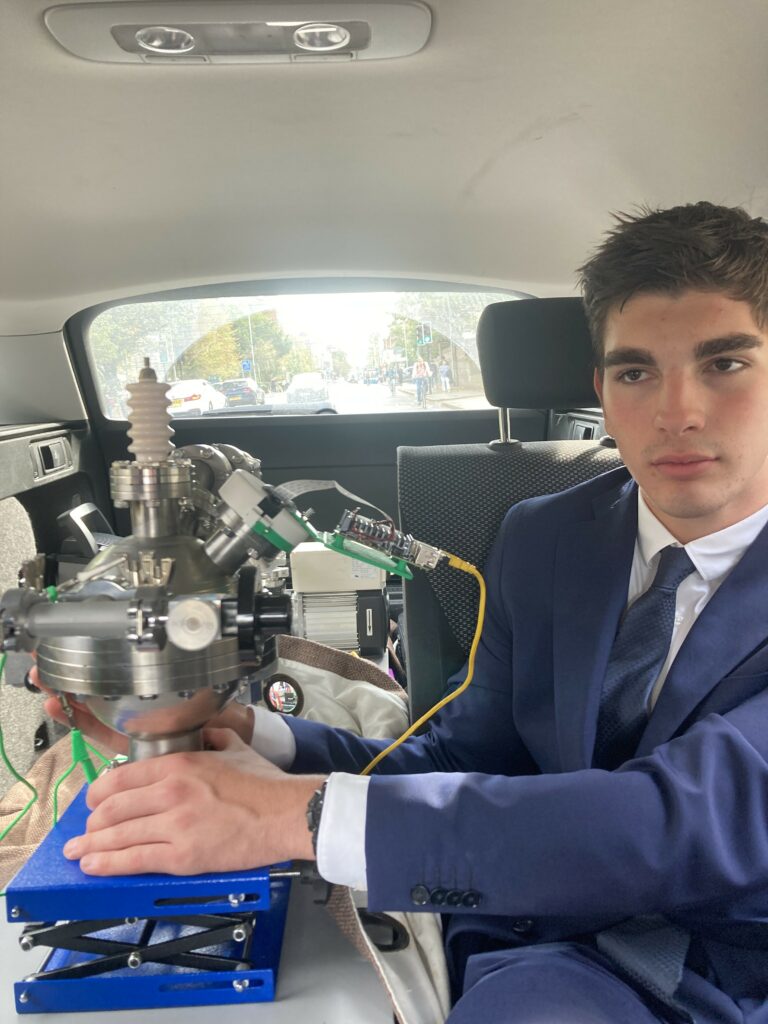
RHC: Many of your peers struggle to complete much less complex school projects. What motivated you to choose such an ambitious project and not give up when facing the first difficulties?
Cesare Mencarini: I believe the main reason I didn’t give up on the project was due to the extensive initial planning, which took about five months. This phase, from when I first began working on the project to when I purchased the first component—a vacuum pump—was crucial. Most of the challenges during this time were related to budget constraints and ensuring compatibility between components. Although there were many issues, they were manageable. However, when the more difficult problems began to surface, the expectations were already set, and the thought of disappointing others—especially after significant funds and time had been invested—became a strong motivator.
Don’t get me wrong, I thoroughly enjoyed every step of the process, and finding solutions to each complication was incredibly rewarding. But ultimately, it was the weight of those expectations that kept me going. I simply couldn’t give up.
RHC: Can you briefly explain what “nuclear fusion” means, how your reactor works, and how far you’ve come in its construction?
Cesare Mencarini: When two or more atomic nuclei collide with sufficient energy, they can fuse together, forming new nuclei and releasing subatomic particles like protons and neutrons in all directions (isotropically). This process also releases a significant amount of energy. However, for the nuclei to successfully fuse, they must reach a certain energy threshold, which can be achieved by increasing their temperature or subjecting them to high pressure—both of which increase their energy.
In the sun, nuclear fusion occurs primarily due to the immense pressure created by its own mass and gravitational field. On Earth, we can’t replicate these exact conditions, so we compensate by using much higher temperatures. To heat the gas, we accelerate its molecules. My reactor achieves this by using a central grid charged at a negative voltage, which attracts positively charged gas ions towards the centre, causing them to collide. This method is known as Inertial Electrostatic Confinement.
As for the construction of my reactor, we are in the final stages and currently, I can form a plasma around the grid. The only component still needed to finalise the reactor and generate neutrons is a power supply with the required specifications, which is unfortunately rare and expensive. As a result, I can’t currently estimate when the reactor will be completed.
RHC: Some have criticized the news by claiming that plasma can be created in other ways and with very simple equipment. Can you tell us why the plasma needed for fusion is different from the plasma production systems available on Amazon?
Cesare Mencarini: Absolutely. Plasma is plasma—the only variables are its temperature and the pressure it’s subjected to. This fourth state of matter is crucial for achieving fusion once it reaches a high enough temperature. However, while plasma is necessary, it’s not the end goal. Other devices can produce plasma using simpler methods, but they cannot replicate the conditions needed for fusion.
For instance, a Van de Graaff generator can generate voltages ten times higher than what my reactor is designed for, but the plasma it creates is momentary and unstable. In contrast, my reactor, made of stainless steel, can withstand much greater pressure differentials because it operates under vacuum conditions—essential for accelerating ions without significant energy loss from random collisions, creating a much more stable and confined plasma.
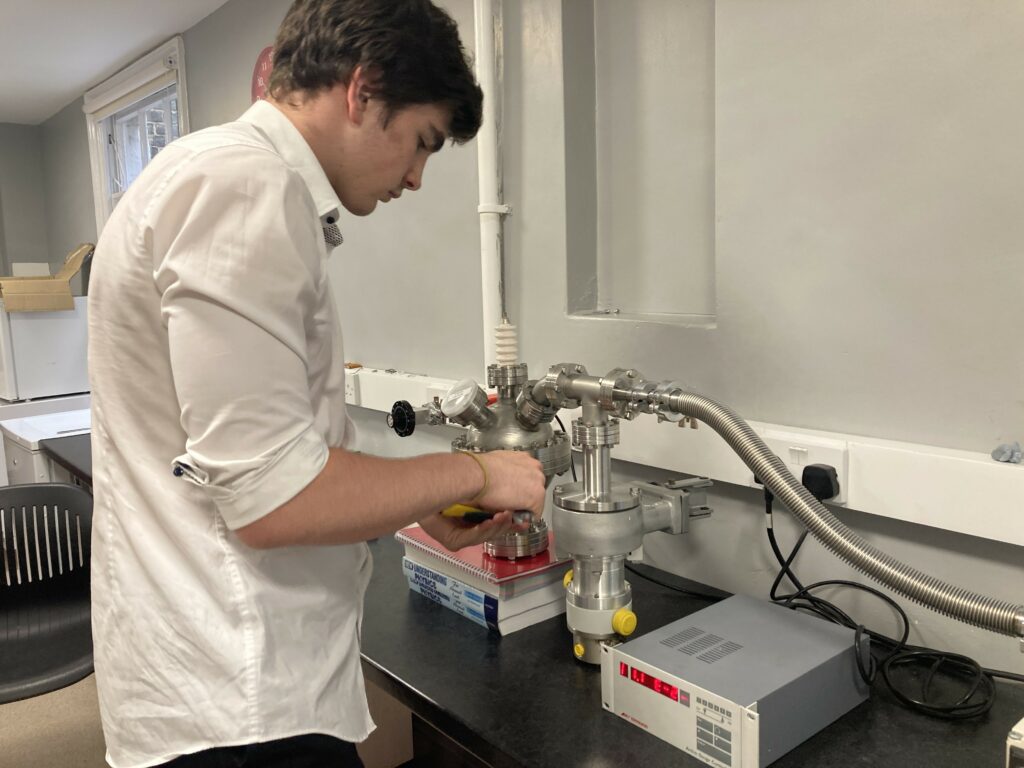
RHC: Have you encountered skepticism or concern from your teachers at school? How did you handle these situations?
Cesare Mencarini: Yes, with any “out of the ordinary” project, you can expect some pushback from others. While it may sound clichéd, having a well-researched understanding of your work allows you to effectively address and counter criticism. It’s crucial to distinguish between unnecessary negativity and
constructive criticism, as the latter is vital for growth and improvement. Ultimately, what you need is a mentor or a supportive group of individuals, along with the necessary funding—beyond that, the opinions of others are secondary and it is important to have a thick skin.
RHC: Hacking is often seen as something negative, but as we frequently report on these pages, it is a “skill” that can be used positively to solve puzzles, overcome obstacles, and see beyond where others have not succeeded before. How do you think hacking can be encouraged among other young people like yourself who wish to explore new frontiers?
Cesare Mencarini: Unfortunately, the media has often portrayed the term “hacking” or “hack” with a negative connotation. However, through education and awareness, we can redefine it as the process of pushing boundaries through problem-solving and perseverance. To promote this mindset of exploring new frontiers, we must lead by example. For instance, one of my primary goals with this project is to inspire other young people by demonstrating that with determination and effort, one can set ambitious goals—like building a fusion reactor—and achieve them.
The phrase “nothing is impossible” remains just a statement until someone proves it true. I hope that my efforts, along with those of others, will ignite a passion in the new generation to tackle projects once thought beyond their reach. This is the essence of innovation: expanding our comfort zones and broadening our knowledge.
RHC: What were the main technical challenges you faced during the construction of the reactor, and how did you overcome them?
Cesare Mencarini: The journey has been filled with numerous challenges, some of which stand out more than others. One of the most memorable occurred on the same day we achieved plasma. We discovered that the chamber wasn’t maintaining its seal and was leaking a significant amount of air. It turned out that one of the copper rings designed to seal the two hemispheres didn’t fit properly. Despite being precisely machined by a professional company, the issue was likely due to thermal deformation during the welding process. We went through four additional gaskets trying various methods to fix the problem. Ultimately, we came up with a simple yet effective solution: using a metal file to adjust the edge of the ring so it would fit properly. This experience reinforced that sometimes the simplest solutions are the most effective.
Another challenge arose later with the pressure gauge controller, which was responsible for reading pressure values from two separate gauges. To stay within budget, we used second-hand equipment from the 1990s, which proved to be quite sensitive and eventually failed beyond repair. To address this critical issue, I designed and built custom pressure controllers. I created schematics, purchased the necessary components, and soldered them onto a matrix board. Developing a final control unit took about two weeks and three different prototypes. Although I am not an electronics engineer and have limited knowledge in this area, I learned that flexibility and a willingness to acquire new skills are crucial for successfully pursuing any project.
RHC: Was there a specific moment when you thought you might not be able to complete the project? How did you find the strength to keep going?
Cesare Mencarini: There wasn’t a single defining moment, but rather an ongoing cycle of uncertainty and challenges. Problems kept appearing: first, one of the pumps wouldn’t start, and I had to try three different controllers before finding one that worked. Then, the pressure control unit blew up, forcing me to build a custom replacement, among other issues. With so many setbacks, the thought of the project failing did cross my mind.
However, the limitless support from my physics professor, who was also my mentor, gave me the confidence to keep the project moving forward. These “trials” pushed me to enhance my skills across various areas and truly tested my problem-solving abilities, making the project even more valuable to my growth.
RHC: Did you work on this project alone? Did you have collaborators? How did you organize the work? Cesare Mencarini: Yes, I worked on the project independently, under the supervision of my physics professor. The PhD student I mentioned earlier provided valuable insights at the start, sharing challenges he faced with his own device so I could avoid similar pitfalls. Beyond that initial guidance, the project was entirely my own effort.
RHC: Your project was presented at the Cambridge Science Festival. What reactions did you receive, and how did it feel?
Cesare Mencarini: We spent about two weeks designing and constructing a custom wooden trolley to transport the fusor to the Cambridge University Engineering Department, which was fortunately just a few minutes away from the school. However, during the move, the trolley tilted, bending the high-voltage feedthrough—the tall white component on top of the fusor. This was an incredibly stressful moment, especially with the science festival scheduled for the next day. Thankfully, we tested it immediately and, despite the damage, the seal wasn’t significantly compromised.
The following day at the Science Festival, the fusor was operational all day, drawing a great deal of interest from both children and adults. People were not only fascinated by the machine itself but also curious about my involvement in the project. It attracted so much attention that people were crossing Cambridge just to see the fusor. It was an immensely rewarding experience.
RHC: Many young people today spend a lot of time in front of devices playing electronic games, which can waste a lot of time that could be better utilized. You are 17 years old, how do you spend your time during the day? What does curiosity mean to you?
Cesare Mencarini: I have to admit, I do fall into that category. I spend a fair amount of time on screens, some of which is dedicated to playing online games, such as flight simulators, as one of my passions is aviation. However, I believe that playing video games or unwinding by watching streaming services or using social platforms isn’t inherently bad, as long as it’s done within reasonable limits.
The rest of my time is dedicated to sports and continuous learning. I’ve been playing water polo for over 8 years, and I also enjoy playing basketball and volleyball with friends to stay active. Additionally, I take Udemy courses on subjects that align with my interests, such as coding and 3D modeling, to further develop my skills. I frequently browse YouTube, watching videos that showcase various projects or offer
useful guides—in fact, that’s how I came across the video about the fusor.
RHC: What advice would you give to young people who, like you, have innovative ideas but fear they don’t have the skills or means to realize them?
Cesare Mencarini: To clarify, the fusor itself isn’t groundbreaking, as many others have attempted to build their own versions. However, what sets my reactor apart is that it was created entirely from scratch on a limited budget while pursuing a two year course for the A-Levels qualifications, in which I received 4 A* (the highest grade). Additionally, I combined additive manufacturing with custom electronics to develop a complete Data Acquisition and Control System, which distinguishes it from many other projects.
Going back to the question, I believe the best approach is not to overthink it. When I started the project, I treated it like any other school assignment. Although it required extra effort and involved building something tangible, the process was quite similar to what you do in school. You study and learn about the subject, then practice with exercises and mock tests—in my case, that meant designing the fusor and applying everything I had learned. Finally, you take the actual exam, which for me was assembling all the components.
RHC: How do you think schools and educational institutions can better support students with unconventional ideas like yours? You have Italian origins—do you think Italy is conducive to these kinds of “adventures”?
Cesare Mencarini: I believe it’s in the school’s best interest to fund student-led projects, especially those that are unconventional. Not only do these projects provide an incredible experience for students, but they also offer significant promotional value for the institution. Beyond financial support, schools play a crucial role in broadening students’ interests. This includes offering a diverse range of field trips across various disciplines and creating clubs or societies where students can collaborate, share ideas, and develop their projects. For instance, during my time at Cardiff Sixth Form College, I attended numerous lectures on astronomy and nuclear reactors at the University of Cambridge, as well as participating in Model United Nations and debating competitions. Additionally, during school breaks, I joined a Nuclear Research Group at Cambridge, where I gained extensive knowledge on fission reactors and computational neutronics. I was even granted access to the office twice a week, which provided invaluable hands-on experience in applied research.
One aspect of the British education system that I particularly appreciate is the “learning by doing” approach. As James Dyson said, “Enjoy failure and learn from it. You can never learn from success.”
Reflecting on my eight years at an Italian school, I’m fairly certain that a project like this would not receive the same level of support in an Italian institution. Nonetheless, I value the Italian approach of encouraging students to “connect the dots,” fostering connections between different disciplines and subjects.
RHC: What was the most exciting moment of your journey during this project?
Cesare Mencarini: This was a high-risk, high-reward project, which meant the challenges were tough
and often frustrating. However, I found these moments to be the most exciting. While the possibility of the project failing was nerve-wracking, each problem solved was a step forward, and the satisfaction that followed far outweighed the stress.
RHC: Finally, what message would you like to leave to young people your age who see science and technology as too complicated or boring?
Cesare Mencarini: Like any other subject, you can’t force someone to love science or technology. However, I believe both fields hold incredible potential for innovation and discovery. I understand that the unknown can be intimidating, which is why it’s crucial for everyone, especially the younger generation, to gain some knowledge in these areas. Not only do they have real-world applications, but they are also valuable when searching for jobs.
The best advice I can offer is to stay curious and keep exploring until you find the field you’re passionate about.
Many thanks to Cesare for this valuable interview. We wish him a bright future in physics and engineering, in the hope that other young people will follow his example. May they realise that nothing is unattainable or impossible, but that it takes determination, commitment and the ability to face challenges, failures and, ultimately, great satisfaction.
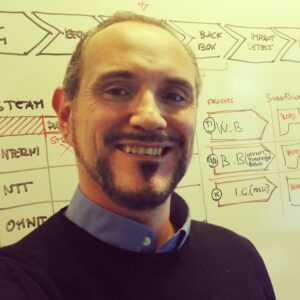 Massimiliano Brolli
Massimiliano Brolli